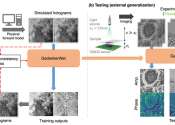'One-way' electronic devices enter the mainstream
Waves, whether they are light waves, sound waves, or any other kind, travel in the same manner in forward and reverse directions—this is known as the principle of reciprocity. If we could route waves in one direction only—breaking ...
May 21, 2020
0
140








